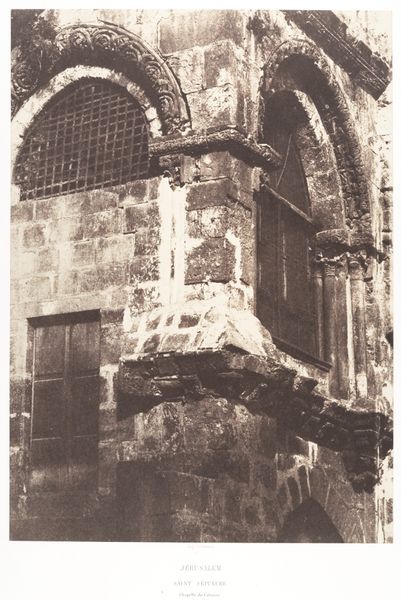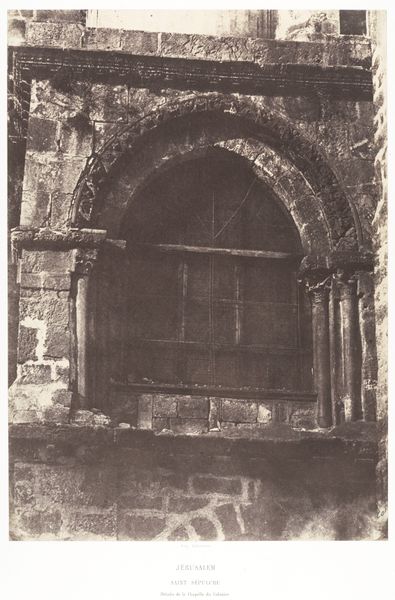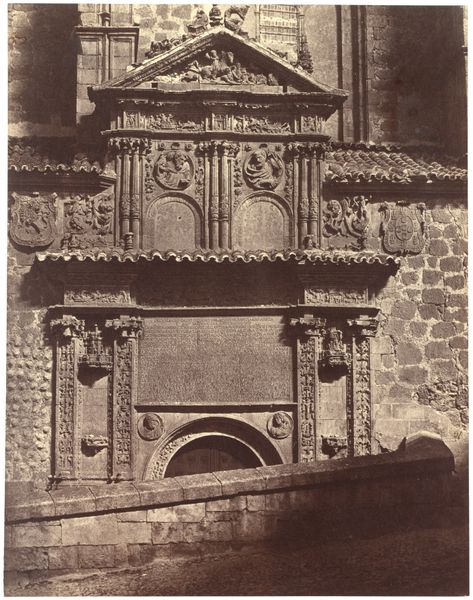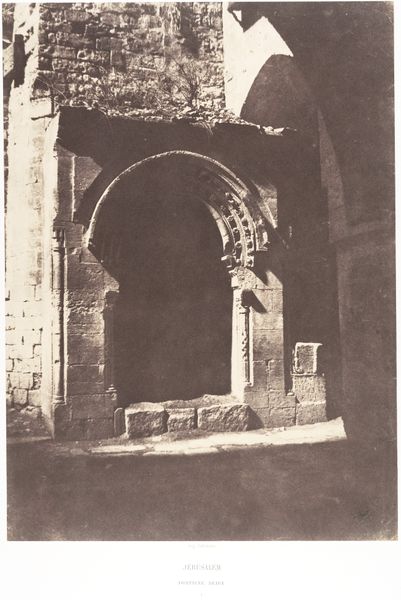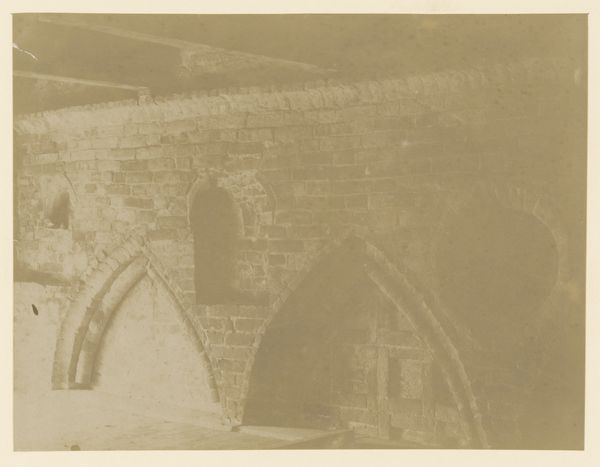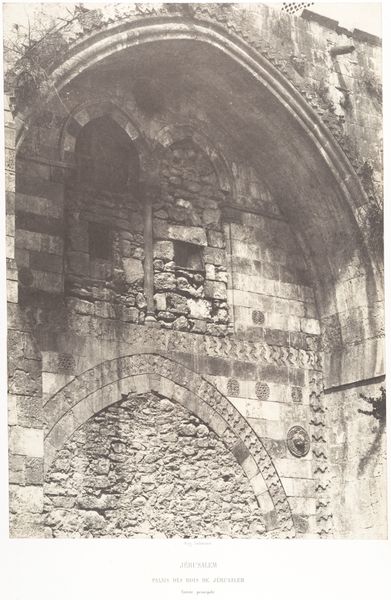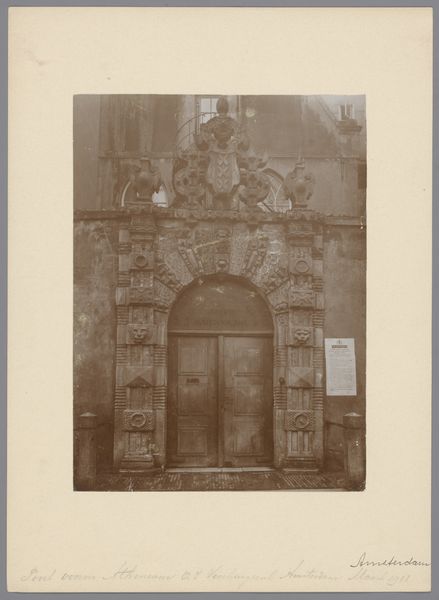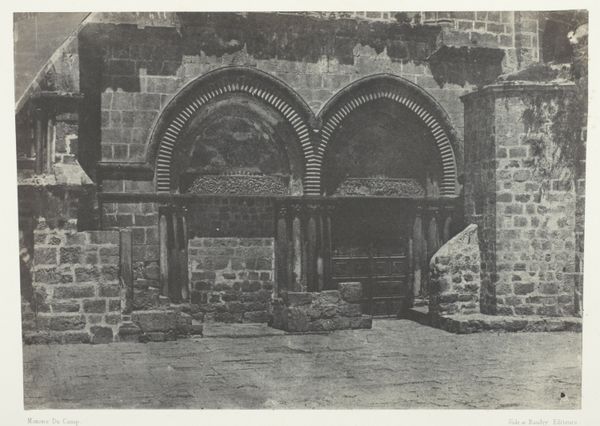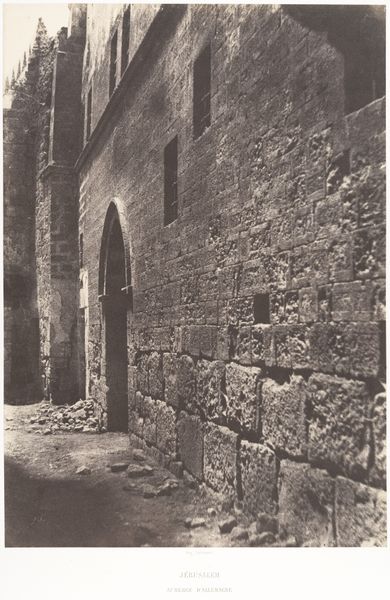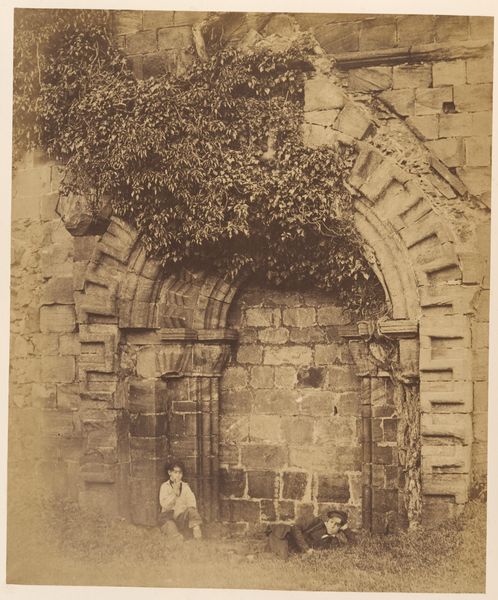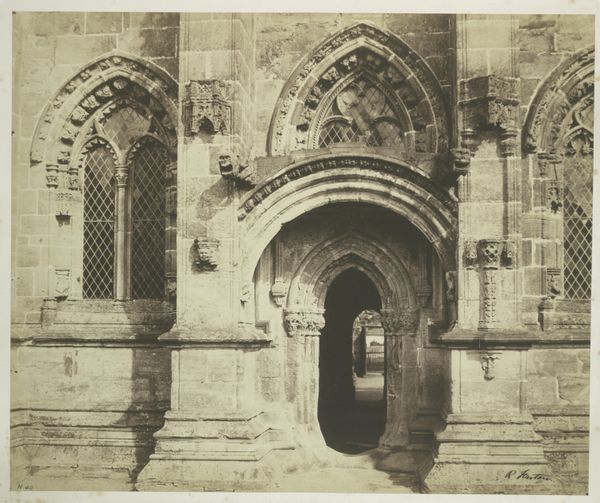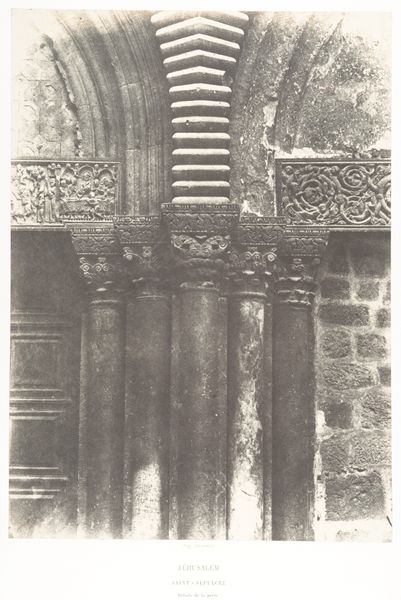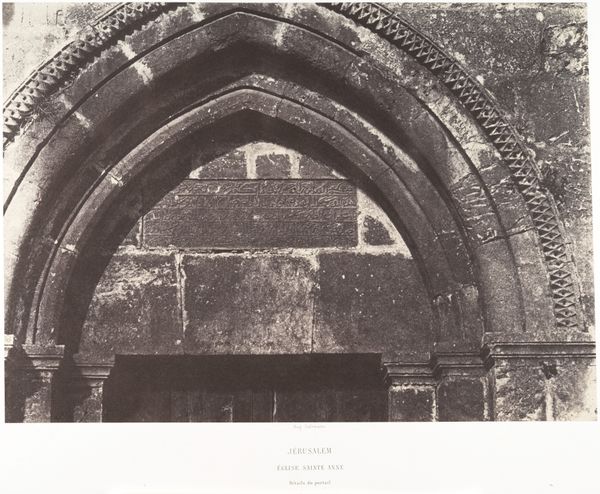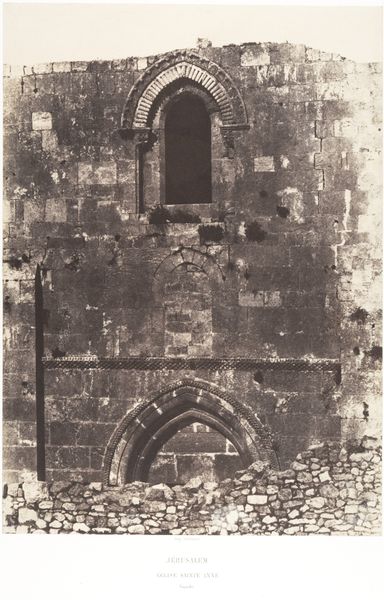
architecture
#
aged paper
#
toned paper
#
old engraving style
#
unrealistic statue
#
carved into stone
#
coloured pencil
#
arch
#
watercolour illustration
#
pencil art
#
watercolor
#
architecture
#
historical font
Copyright: Public Domain
This is a calotype photograph of Linlithgow Castle, made between 1843 and 1848 by the Scottish duo Hill and Adamson. The process involved coating paper with silver iodide, exposing it in a camera, and then developing the latent image. It's a far cry from our digital cameras today. What's fascinating is how this early photographic technique influences what we see. The grainy texture and soft focus are direct results of the materials used. The paper fibers and the silver reacting to light create a unique visual language. Now, think about the social context. Photography was revolutionary. It democratized image-making, but also changed the way we consume it. Before, a painted portrait was a luxury. Suddenly, anyone could have their likeness captured. Hill and Adamson were right there, using this new technology to document their world. This photograph isn't just a picture of a castle. It’s a record of a specific moment in time, captured through a specific process, which ultimately speaks to the shifting landscape of art, technology, and society.
Comments
No comments
Be the first to comment and join the conversation on the ultimate creative platform.
